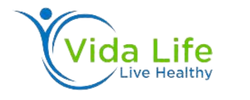Complementary Feeding
Transitioning from exclusive breastfeeding to family foods is an integral component of child development and growth (4), yet many 6-23 month-old infants living in low and middle income countries lack access to commercially fortified foods (5).
Infants typically become ready for solid food beyond breast milk when they have the physical ability to sit up unaided, demonstrate interest in mealtimes and don’t exhibit tongue thrust/extrusion reflexes (4-6 months old)(1); however many infants are exposed to complementary foods before this point (6).
Early introduction can be detrimental, leading to malnutrition, impaired cognitive development and reduced work capacity in adulthood (7). Healthcare providers can mitigate this risk by communicating consistent messages about complementary feeding to families while emphasizing developmental readiness when discussing complementary feeding (8).
Complementary Foods
At about six months of age, babies become developmental ready to consume other foods beyond breast milk. When prepared and consumed safely, these other foods can enhance breastfeeding by supplementing its effects and contributing to meeting health goals such as proper growth, nutritional intake and better gastrointestinal function.
Protein and fat rich foods are vitally important to a child’s diet as they provide energy necessary for healthy development and taste development, and aiding absorption of essential micronutrients like iron.
Food consumed during the critical food period (CF period) can have significant effects on nutrition outcomes, including growth, size, body composition and malnutrition or overweight prevalence/incidence rates. Studies conducted across studies from low-, middle- and high-income countries have examined whether specific dietary patterns during this time correlate to specific outcome variables.
Complementary foods should be nutrient-rich, safe, digestible and pleasing to infants. Peanuts, cow’s milk products, eggs and fish should ideally be introduced early so as to lower the likelihood of allergies developing later.
Complementary Supplements
There are various supplements available to support your health goals, including vitamins and minerals, herbal and botanical supplements, amino acids or whole food-based remedies. They may help support specific conditions or achieve lifestyle goals like weight management or immune system enhancement. There is a variety of products at various prices; it’s best to select well-known brands with proven high quality records.
Most supplement users reported taking them for general improvements in health and well-being, such as feeling better or increasing energy levels. Unfortunately, however, some consumers take supplements for treating disease symptoms; this can be dangerous; so it is wise to read labels closely and avoid those that claim to cure diseases. FDA’s Evidence-Based Practice Centers have assessed a limited number of these claims on supplements that make such claims.
Complementary Diets
Homemade complementary foods prepared by caregivers typically consist of cereals and starchy roots and tubers such as maize, sorghum, millet, teff, potatoes, yam and rice and are commonly known as gruel, porridge, kitta fetfet or dabo (25). Such food has lower energy density compared to breast milk and may even be watery or dilute; additionally it tends to lack protein – an essential nutrient during periods of wasting – contributing to protein-energy malnutrition (PEM). (41).
Home-cooked foods typically lack adequate amounts of iron and zinc due to being comprised of thin cereal porridges with high phytate content that impedes absorption and bioavailability of minerals (22). Therefore, these homemade meals do not meet infant/young children’s daily requirements for these micronutrients. Foods rich in iron include liver, organ meats, enriched cereals, dark green vegetables beans shellfish egg yolks; while for zinc supplementation there should be both animal source (red meat) and plant-sourced sources (plant-based).

